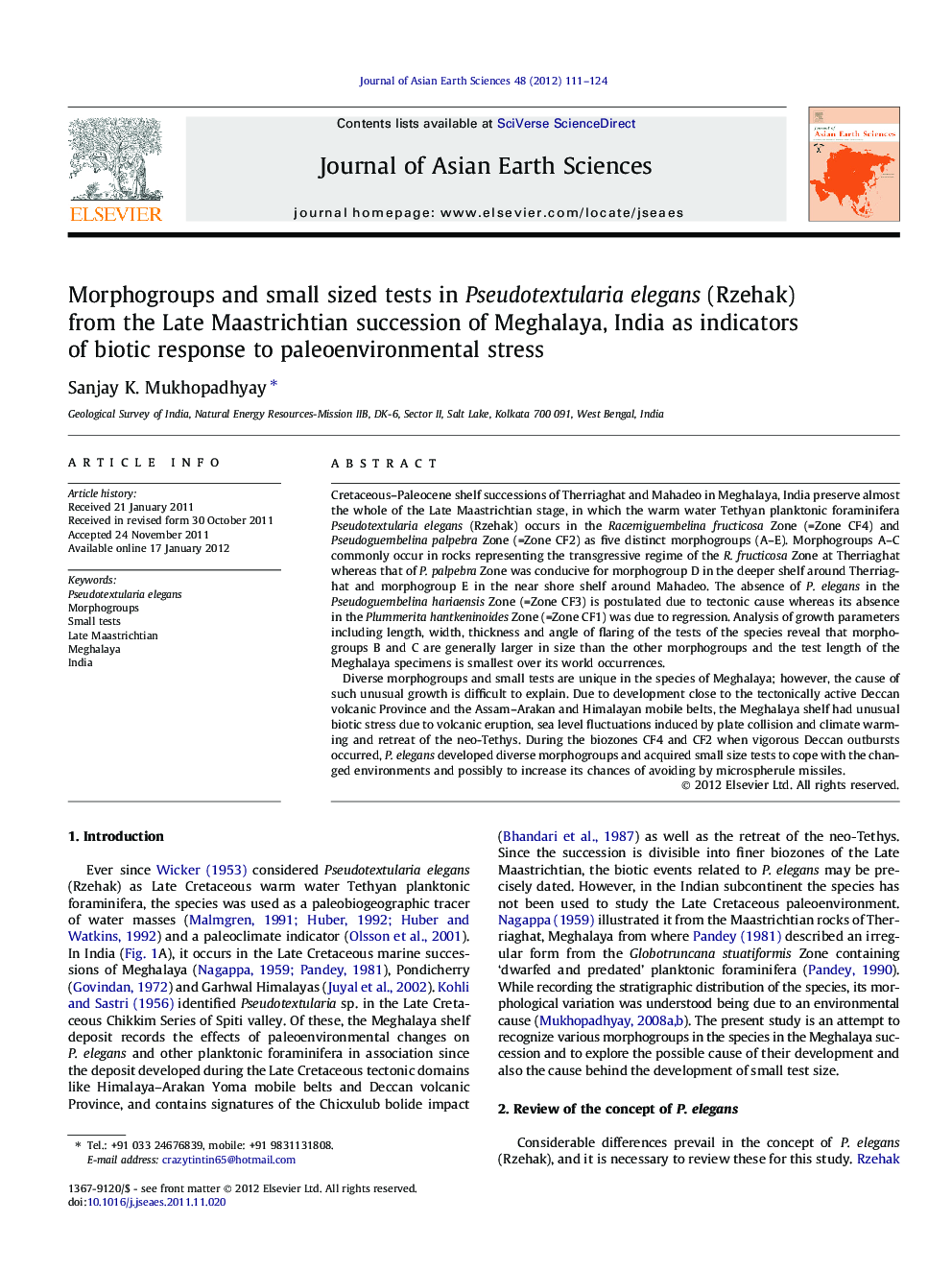| کد مقاله | کد نشریه | سال انتشار | مقاله انگلیسی | نسخه تمام متن |
|---|---|---|---|---|
| 4731586 | 1640416 | 2012 | 14 صفحه PDF | دانلود رایگان |

Cretaceous–Paleocene shelf successions of Therriaghat and Mahadeo in Meghalaya, India preserve almost the whole of the Late Maastrichtian stage, in which the warm water Tethyan planktonic foraminifera Pseudotextularia elegans (Rzehak) occurs in the Racemiguembelina fructicosa Zone (=Zone CF4) and Pseudoguembelina palpebra Zone (=Zone CF2) as five distinct morphogroups (A–E). Morphogroups A–C commonly occur in rocks representing the transgressive regime of the R. fructicosa Zone at Therriaghat whereas that of P. palpebra Zone was conducive for morphogroup D in the deeper shelf around Therriaghat and morphogroup E in the near shore shelf around Mahadeo. The absence of P. elegans in the Pseudoguembelina hariaensis Zone (=Zone CF3) is postulated due to tectonic cause whereas its absence in the Plummeritahantkeninoides Zone (=Zone CF1) was due to regression. Analysis of growth parameters including length, width, thickness and angle of flaring of the tests of the species reveal that morphogroups B and C are generally larger in size than the other morphogroups and the test length of the Meghalaya specimens is smallest over its world occurrences.Diverse morphogroups and small tests are unique in the species of Meghalaya; however, the cause of such unusual growth is difficult to explain. Due to development close to the tectonically active Deccan volcanic Province and the Assam–Arakan and Himalayan mobile belts, the Meghalaya shelf had unusual biotic stress due to volcanic eruption, sea level fluctuations induced by plate collision and climate warming and retreat of the neo-Tethys. During the biozones CF4 and CF2 when vigorous Deccan outbursts occurred, P. elegans developed diverse morphogroups and acquired small size tests to cope with the changed environments and possibly to increase its chances of avoiding by microspherule missiles.
► Late Maastrichtian succession of Meghalaya contains P. elegans in zones CF4 and CF2.
► Its growth parameters reveal uniqueness in small atypical tests and diverse morphogroups.
► Test length of Meghalaya specimens is smallest over its world counterparts.
► Uniqueness reflect struggle in stressed environment by Deccan eruption, tectonics and microsperules.
► It may help to distinguish a marine transgression due to either warming or tectonic impulses.
Journal: Journal of Asian Earth Sciences - Volume 48, 2 April 2012, Pages 111–124